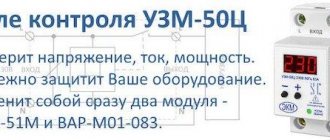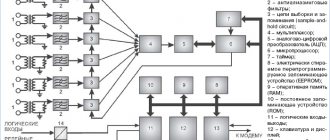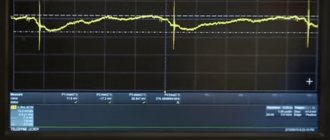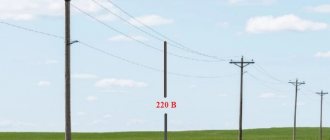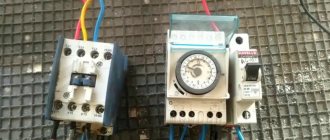Lighting inside the enterprise
The lighting network(s) for indoor lighting are divided into supply and group networks.
Power supply
It is laid from the substation (TS) to the ASU of the workshop (building) or from the ASU to group lighting panels (GLC). In order not to load the substation with circuit breakers, the main switchboard of the enterprise can “take” power from the main distribution points (panelboards).
It is imperative that enterprises separate group networks of working and emergency lighting, connecting them to different transformers or different lines from the main panel.
Lighting power cables in industrial enterprises can be supplied:
- to the lighting group panel;
- to the highway panel;
- lighting bus wires, if they are included in the project.
Group networks of promotional education
Serve for connecting interior lighting fixtures and sockets.
In the pictures we see diagrams of group networks of 3-phase wiring with a working zero and connection of lamps to phases in a 3-phase group.
The upper circuit is optimal for reducing voltage losses.
The lower scheme is used more often, as it does not have the disadvantages of the upper option.
For lighting groups, panels of the OP, OSh, OShV, UOShV types for 380/220 V are used. They are equipped with single-pole circuit breakers with the same tripping current within one panel.
Application area. Definitions
6.1.1.
This section of the Rules applies to installations of electric lighting of buildings, premises and outdoor lighting structures in cities, towns and rural settlements, territories of enterprises and institutions, installations of long-term health ultraviolet irradiation, installations of illuminated advertising, illuminated signs and illumination installations. 6.1.2. Electric lighting of special installations (residential and public buildings, entertainment enterprises, club institutions, sports facilities, explosive and fire hazardous areas), in addition to the requirements of this section, must also satisfy the requirements of the relevant chapters of Section. 7.
6.1.3. Supply lighting network - a network from a substation switchgear or a branch from overhead power lines to the VU, ASU, main switchboard.
6.1.4. Distribution network - a network from the VU, ASU, main switchboard to distribution points, switchboards and power points for external lighting.
6.1.5. Group network - a network from panels to lamps, plug sockets and other electrical receivers.
6.1.6. Outdoor lighting power point is an electrical distribution device for connecting a group outdoor lighting network to a power source.
6.1.7. Night mode phase is a phase of the supply or distribution network of outdoor lighting that is not switched off at night.
6.1.8. Cascade control system for outdoor lighting is a system that sequentially turns on (turns off) sections of a group network of outdoor lighting.
6.1.9. Lamp charging wires - wires laid inside the luminaire from the contact clamps or plug connectors installed in it for connection to the network (for a luminaire that does not have contact clamps or a plug connector inside - wires or cables from the place where the luminaire is connected to the network) to those installed in the luminaire devices and lamp sockets.
Lamps for industrial enterprises
For lighting groups in production use:
- Lamps DRL (mercury-arc phosphor), DRI (mercury-arc metal-halogen), DRIZ (metal-halogen mirror lamps);
- Rows of fluorescent lamps with increased tightness;
- Sections of cables of supply lines: from 10 to 120 mm2;
- Sections of cables of group lines; from 1.5 to 25 m2;
- Lighting panels SHCHOV-IA and SHCHOV-2A 380/220 V according to the class corresponding to the explosion hazard of the room. For example, for hazardous areas the class of shields should be: B1a, B16, VPa, B1g.
Electric lighting network diagrams
⇐ PreviousPage 3 of 21Next ⇒Lighting installations are divided into indoor and outdoor. Indoor lighting installations are designed for lighting industrial, administrative, residential and public buildings and premises. Outdoor lighting installations are designed to illuminate the territories of enterprises and institutions, cities, towns, etc.
Indoor lighting installations are divided into working and emergency lighting installations. Work lighting is used to illuminate rooms in general and work surfaces. Emergency lighting can be safety lighting and evacuation lighting. Safety lighting is designed to continue operation in the event of an emergency shutdown of the work lighting. Work and safety lighting luminaires must be powered from independent power sources. Evacuation lighting is designed to ensure the safe evacuation of people along main passages equipped with illuminated exit signs, and is provided in industrial premises where more than twenty people can be present at the same time.
Electrical lighting networks are divided into supply, distribution and group networks.
The lighting supply network is a network from the substation switchgear to the input device (ID), input distribution device (IDU) or main distribution board (MSB).
Distribution network - a network from the VU, ASU, main switchboard to distribution points, switchboards and power points for external lighting. Group network - a network from distribution points, switchboards to lamps, plug sockets and other electrical receivers.
Supply and distribution networks for lighting. It is recommended to supply power to indoor lighting installations from switchgear of substations, switchboards, main and distribution busbars using independent lines made of wires or cables. Outdoor lighting networks can receive power from switchgear of substations, distribution points and input-distribution devices and are carried out by cable or overhead lines (using self-supporting insulated wires). External lighting lines can be laid on existing supports belonging to electrical grid organizations, along the supports of the contact network of electrified transport (using cable lines or self-supporting insulated wires), on engineering structures (bridges, transport overpasses, etc.). The supply and distribution networks for indoor and outdoor lighting are three-phase, four- or five-wire, depending on the grounding system used.
It is recommended that work lighting be powered via lines not connected to power units. All types of lighting may be powered from common lines with electric power plants or from power distribution points, with the exception of networks in industrial buildings without natural lighting. Protection and control devices must be installed at the points where the lines of the lighting supply network are connected to the power supply line of electric power plants or to power distribution points. If the supply and distribution lighting networks are carried out by busbars, group panels may not be provided. Instead, protection and control devices can be used to power groups of luminaires. The use of common group panels for powering work lighting, safety lighting and evacuation lighting is not permitted. Common panels may be used for safety and evacuation lighting. In Fig. 1.9.8 shows a diagram of the supply and distribution networks of internal lighting. From the first section of the 0.4 kV busbars of the two-transformer substation, the lighting panel receives power, from the busbars of which the group panels of working lighting are powered according to the main or radial circuits. The emergency lighting panel receives power from the second section of 0.4 kV busbars. Emergency lighting should turn on automatically in the event of an emergency shutdown of the working lighting.
Rice. 1.9.8. Diagram of the lighting supply and distribution network : / - supply network; 2 - distribution network; 3 — working lighting panel; 4 — group panels for working lighting; 5—distribution point; 6— emergency lighting panel
In Fig. 1.9.9 shows the possibility of connecting working lighting to the head section of the main busbar. In this case, it is recommended to power the emergency lighting from another transformer substation or another independent power source. The cross-power supply diagram for lighting from two transformer substations is shown in Fig. 1.9.10. Working and emergency lighting are powered by independent lines from different transformer substations. Emergency lighting in industrial buildings may be connected to distribution points and busbars, with the exception of industrial buildings without natural lighting. Rice. 1.9.9. Power supply diagram for the lighting network from the busbar : / - supply network; 2 - busbar; 3 - group panels for working lighting
Rice. 1.9.10. Scheme of cross-power supply of lighting from two transformer substations : / - lighting supply network; 2 — lighting board; 3 - lighting distribution network
⇐ Previous3Next ⇒
What makes your dreams come true? One hundred percent, unshakable confidence in your...
What Causes Trends in Stock and Commodity Markets Freight Train Theory Explained My first 17 years of market research consisted of trying to figure out when...
What will happen to the Earth if its axis shifts by 6666 km? What will happen to the Earth? - I asked myself...
WHAT HAPPENS IN ADULT LIFE? If you are still connected to your mother in the wrong way, you are avoiding separation and independent adult existence...
Didn't find what you were looking for? Use Google search on the site:
Power supply circuits for lighting installations
Electric lighting networks are divided into supply, distribution and group.
Supply lighting network - a network from the substation switchgear or branch from overhead power lines to the input device (ID), input distribution device (IDU), main distribution board (MSB).
Distribution network - a network from the VU, ASU, main switchboard to distribution points, switchboards and lighting power points.
Group network - a network from panels to lamps, plug sockets and other electrical receivers.
Electric lighting is powered, as a rule, together with power electrical receivers from common three-phase power transformers with a solidly grounded neutral and a rated voltage on the low side equal to 400/230 V. The rated voltage in such networks is 380/220 V.
The lighting installation can be powered either from individual lighting transformers or from common, combined transformers that simultaneously supply the power load. Separate lighting transformers are rarely installed when power transformers power loads such as welding machines or large engines, the voltage of which changes sharply when turned on.
Power supply diagram for lighting and power loads
A group panel is a device in which protection devices and switching devices (or only protection devices) are installed for separate groups of lamps, plug sockets and stationary electrical receivers.
From the substation distribution boards, the lighting networks are powered by independent separate lines. Each of them powers one or more group shields, depending on their power and relative position. When supplying the mains to three or more (group) panels, they should be used with control devices at the input. In buildings without natural light, it is recommended to install input devices on each of the group lighting panels, except in cases where each panel is powered by an independent line.



